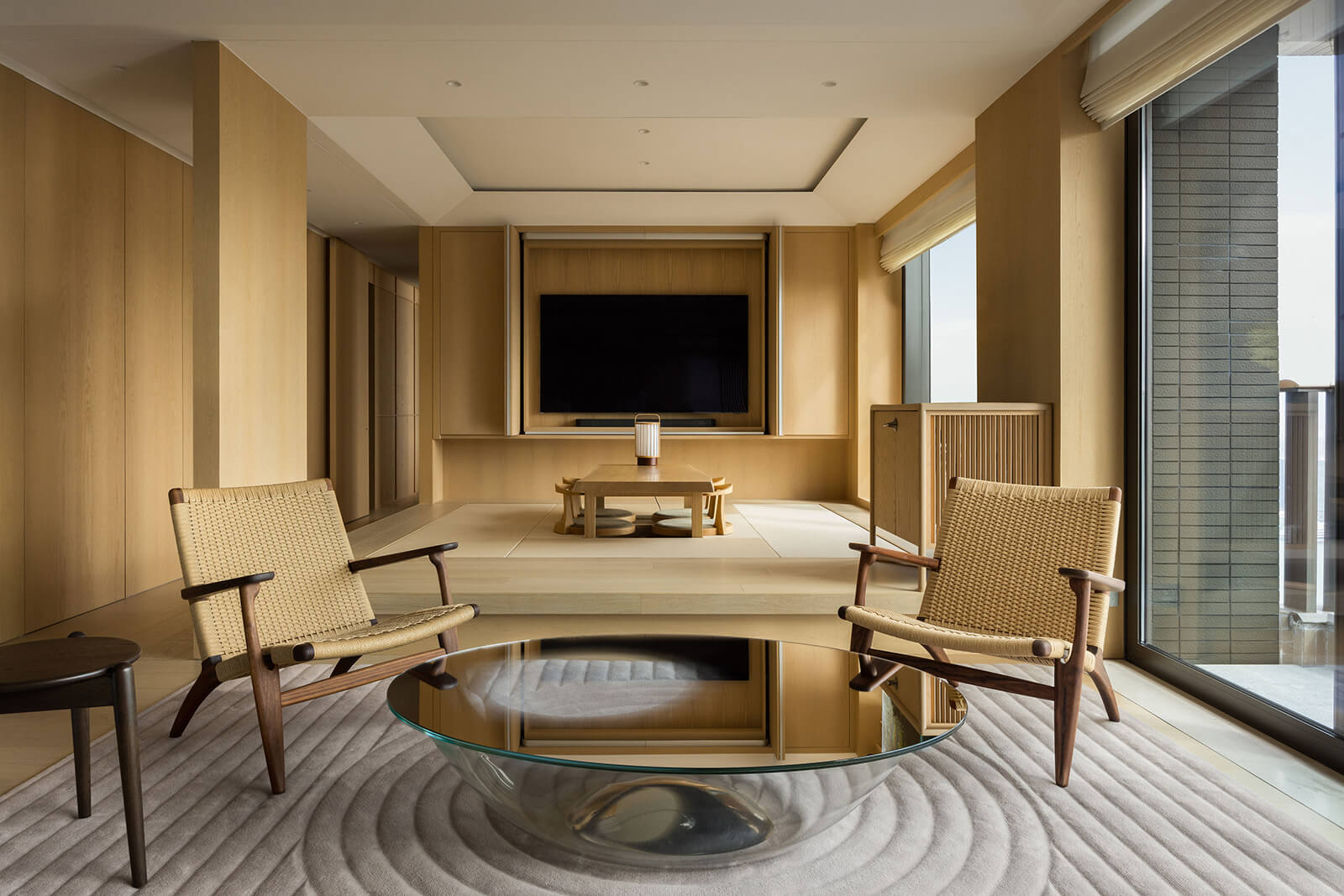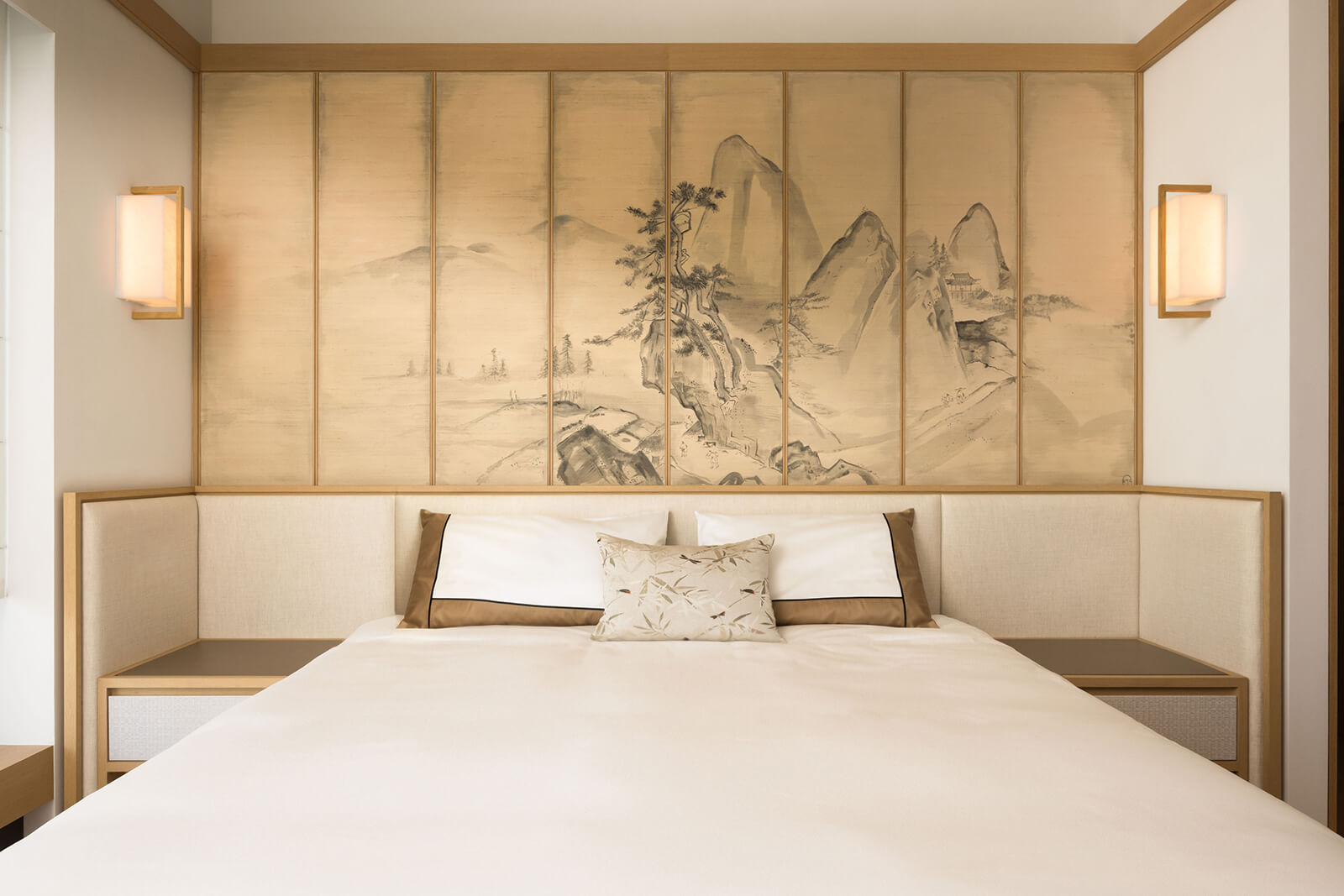The art of living: A Shanghai apartment's journey to a fluid, creative sanctuary
by Aarthi MohanApr 01, 2025
•make your fridays matter with a well-read weekend
by STIRworldPublished on : Jun 25, 2024
In the heart of the densely-populated Hong Kong Central, a client desired an apartment that reflects their affinity for Japanese culture and traditions. In Situ and Partners came onboard to realise their vision through a zen-like sanctuary that captures panoramic views of mountains and the sea while hinged in the middle of an upmarket urban area, a few minutes walk from the business district. Approached with the philosophy of ‘less is more’, a canvas of neutrals spread over this 2,000 square feet pied-à-terre, creating a perfect backdrop to relish the simplicity of life.
Founded in 2011, Hong Kong-based In Situ and Partners specialises in creating sophisticated contemporary environments. The firm has designed architecture and interiors for numerous hospitality, residential and retail projects, delivering uniquely tailored projects for every client.

The residence design features a traditional tatami tea room paired with a living area, a kitchen with minimal dining, a master suite, and plenty of storage. Clean lines, simple forms and immaculate spaces allow functions to take centre stage. Elements of modern technology are cleverly concealed behind finishes, resulting in a grounding experience. The light parquet flooring and natural wooden furniture throughout the apartment brings a monotonous serenity.
The zen abode opens to a spacious T-shaped common area basking in natural light, of which the dining, living and tea room are a part. In the middle of the dining area, a circular dining table sporting light neutrals sit elegantly on a metal base, contrasting with brown-black dining chairs. On one end is the tea room in which traditional tatami mats adorn the raised floor. Tea ceremonies are essential to Japanese hospitality, representing harmony, respect, purity and tranquillity. The space allows the residents to slow down from their fast-paced lives and strengthen their bond with each other and their guests.
The tea room spills into the living area where a mirror-finished coffee table sits centrally on a rug with a raked gravel garden pattern. The straight lines in the pattern symbolise order and stability, and the concentric circles are associated with natural elements like water and mountains. A folding wood and glass screen behind the living area reveals an elegant studio, elevated by a striking green and white kakejiku (hung scroll) in black backing, complementing the black cabinetry and chairs. A workstation for two against the floor-to-ceiling length corner window offers views of the city and the mountains.
Beyond the common areas, a narrow passageway leads one to the walk-in closets and the master suite. The sizeable walk-in closet showcases textured glass door cabinets and washi paper finishes.

On the corridor’s left is the master bedroom, dressed in beige tones and designed with plain rectangular geometry. Following the principles of Feng Shui, graceful silk painting of a serene monochrome landscape sits above the wide headboard. The custom-made lighting fixtures double as wall art, fitting with the rest of the furniture like a puzzle piece.
Elsewhere the kitchen is understated and practical with custom-made grey matte lacquer cabinetry, complementing the apartment’s austereness.
A modern Japanese-style master bathroom flaunts traditional materials and fixtures, including a circular bathtub crafted by Japanese artisans. “We wanted the human intervention to be noticeable and highlight the raw textures of the materials, such as the imported Japanese natural wood with open grain and the Italian Ceppo di Gre stone used in the bathroom. The very talented Japanese light designer, Koichi Tanaka of Lightlinks, who collaborated with us on the project, complimented us on being very loyal to Japanese design principles, which was in itself another great reward,” explains the firm. The texture and grains of the Japanese imported fragrant wood fluted panels and similarly cut Italian stone create a cohesively designed space.
Yacine Bensalem, founder of In Situ and Partners tells STIR that the minimalist nature of the project required no room for error. “From the ceiling to the parquet, from the junctions to the millwork, there was no tolerance for imperfection. As a result, the reward was to have a perfectly executed project while keeping the minor flaws that come with craftsmanship,” he adds.
The simplicity and subtlety of the apartment ensure the residents feel a strong connection with nature, despite being in the middle of the city. Beyond the aesthetic influences of Japanese culture, the house manifests its deep-rooted philosophy and beliefs on the state of being.
STIR asked Bensalem which aspect of the design he would change if he could do it all again. He said, “There is nothing that I will change as this project reflected what the client wanted. If I had to do the same design for myself, I would have probably created a stronger contrast with the very neutral, serene space. For example, I would have designed a room fully covered in wood with a charcoal finish, adding a negative to the light wood, as I find contrasting environments very powerful.”
(Text by Bansari Paghdar, intern at STIR)
by Aarthi Mohan Oct 07, 2025
At Melbourne’s Incinerator Gallery, a travelling exhibition presents a series of immersive installations that reframe playgrounds as cultural spaces that belong to everyone.
by Asmita Singh Oct 04, 2025
Showcased during the London Design Festival 2025, the UnBroken group show rethought consumption through tenacious, inventive acts of repair and material transformation.
by Gautam Bhatia Oct 03, 2025
Indian architect Gautam Bhatia pens an unsettling premise for his upcoming exhibition, revealing a fractured tangibility where the violence of function meets the beauty of form.
by Mrinmayee Bhoot Oct 02, 2025
This year’s edition of the annual design exhibition by Copenhagen Design Agency, on view at The Lab, Copenhagen, is curated by Pil Bredahl and explores natural systems and geometry.
 surprise me!
surprise me!
make your fridays matter
SUBSCRIBEEnter your details to sign in
Don’t have an account?
Sign upOr you can sign in with
a single account for all
STIR platforms
All your bookmarks will be available across all your devices.
Stay STIRred
Already have an account?
Sign inOr you can sign up with
Tap on things that interests you.
Select the Conversation Category you would like to watch
Please enter your details and click submit.
Enter the 6-digit code sent at
Verification link sent to check your inbox or spam folder to complete sign up process



by STIRworld | Published on : Jun 25, 2024
What do you think?